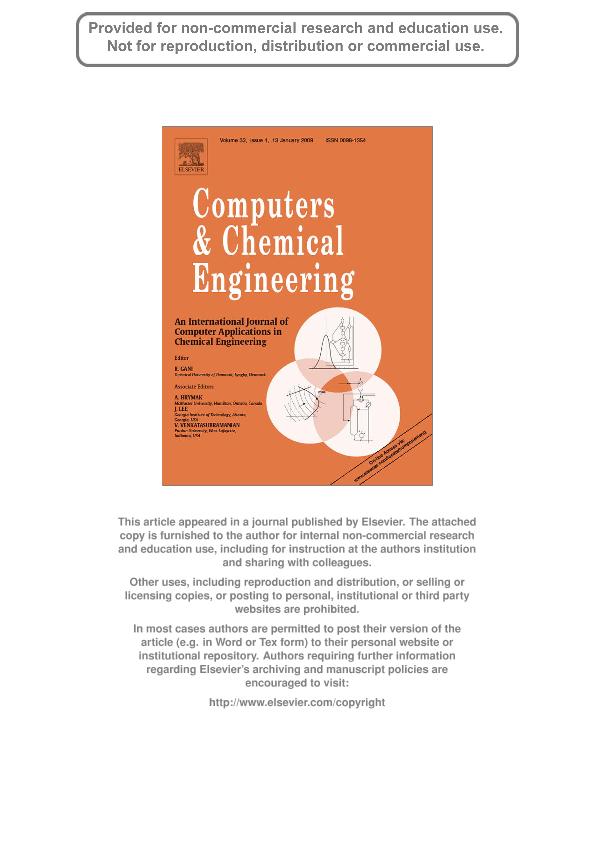Artículo
Global modeling and simulation of a three-phase fluidized bed bioreactor
Fecha de publicación:
01/2009
Editorial:
Pergamon-Elsevier Science Ltd
Revista:
Computers and Chemical Engineering
ISSN:
0098-1354
Idioma:
Inglés
Tipo de recurso:
Artículo publicado
Clasificación temática:
Resumen
The main purpose of this paper was to present a heterogeneous model of a three-phase solid-liquid-gas system to investigate the hydrodynamics and biological behavior and the system performance of anaerobic fluidized bed reactors (AFBRs). The Anaerobic Digestion Model No. 1 (ADM1) was selected to describe the substrate degradation scheme and was applied to a biofilm system. Global modeling of AFBRs involves differential mass and momentum balance equations for the three phases, differential mass balance equations for phase components, and algebraic equations to compute the biochemical and physico-chemical processes that take place in the bioreactor. A one-dimensional (axial) dynamic model was proposed, and different phase flow patterns were analyzed. Simulation results of a case study based on a feed with a low substrate concentration (1 g of chemical oxygen demand, COD, per liter) are shown. As first approach, biochemical transformations are assumed to occur only in the fluidized bed zone but not in the free-support material zone. A sensitivity analysis of simulation results related to model parameters with high uncertainty such as specific biofilm detachment rate, liquid-gas mass transfer coefficient, and particle density and diameter was performed. A second approach based on model extension to the two-phase non-fluidized zone allowed evaluating the effect of substrate consumption by suspended biomass in the free-bioparticles zone. A decrease in the biofilm concentration up to 3.6% and thus, a decrease in the COD removal efficiency was predicted. However, some factors involving the biofilm detachment rate, reactor design characteristics and substrate residence time need to be analyzed for each specific case. The implementation of this modeling approach resulted in more programming effort and CPU time than the first one. A key feature of the model is the simultaneous prediction of phases and components dynamics, including the effect of biofilm growth in the fluidization characteristics and interaction among them in both hydrodynamic and biological transients.
Archivos asociados
Licencia
Identificadores
Colecciones
Articulos(INGAR)
Articulos de INST.DE DESARROLLO Y DISEÑO (I)
Articulos de INST.DE DESARROLLO Y DISEÑO (I)
Citación
Fuentes, Mauren; Mussati, Miguel Ceferino; Scenna, Nicolas Jose; Aguirre, Pio Antonio; Global modeling and simulation of a three-phase fluidized bed bioreactor; Pergamon-Elsevier Science Ltd; Computers and Chemical Engineering; 33; 1; 1-2009; 359-370
Compartir
Altmétricas




